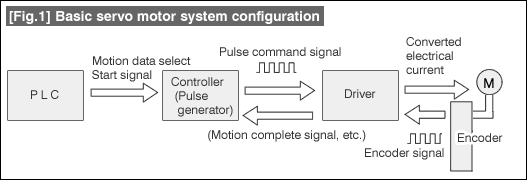#035 Motion Mechanism Design - 5 : Servo Motors
Characteristics of both servo motors in this tutorial as well as the stepper motors in the previous tutorial are well represented by their respective names. Stepper motors are controlled by steps (more accurately Pulses). Servo motors in this tutorial, like its name's origin "to serve as told", can be controlled as a servant.
In order to do this, a rotation detector (called Encoder) is built into the motor. The encoder detects motor shaft's position and speed. The control scheme compares the motor's actual behavior against the internal program to perform a feedback control (position/velocity control).

The encoder turns the motor into a servant in this system. Since the servo motor has a built in rotation detector, alarm signals can be output when any abnormal stops or loads are encountered.
The control scheme targets to reduce the error between the detected pulses and the commanded pulses to zero so the net control accuracy can be 1 pulse (2 pulses in total). The accuracy increases as the encoder resolution increases.
There are some cautionary points such as the mechanical rigidity of the system. It may become difficult to achieve 1 pulse control due to lack of system rigidity requiring great efforts on servo parameter tuning. It is important to properly design the mechanical system in order to benefit fully from servo motors.
- Positioning technology
- Designing and processing
- Sensor Technology
- Automation elements technology
- Clean room technology
- Design hints
- Design tips
- Designing and Machining
- Drive mechanism design
- Hints on designing
- Linear Motion Components
- Locating Technology
- Manufacturing technology
- Motion mechanism design
- Pneumatic Drives
- Production Technology
- Technology Outlook
- General description
- Low-cost automation and materials
- Transfer LCA
- #333 Know-how on automation: Pressurized heating technology - 5: Multilayer pressurized heating process technique
- #332 Know-how on automation: Pressurized heating technology - 4: Points to remember when designing mechanism of pneumatic pressurization method
- #331 Know-how on automation: Pressurized heating technology - 3: Pneumatic pressurization method and pressure profile
- #330 Know-how on automation: Pressurized heating technology - 2: Pressurization method and pressure profile
- #329 Know-how on automation: Pressurized heating technology



